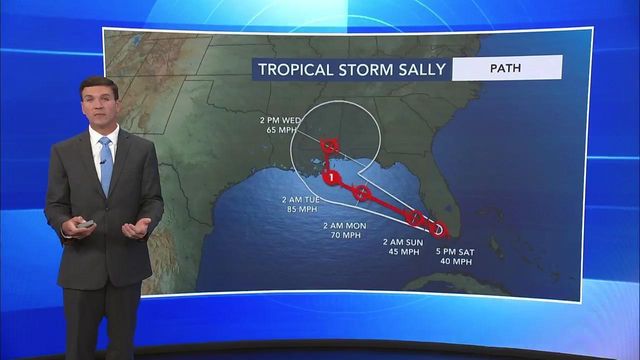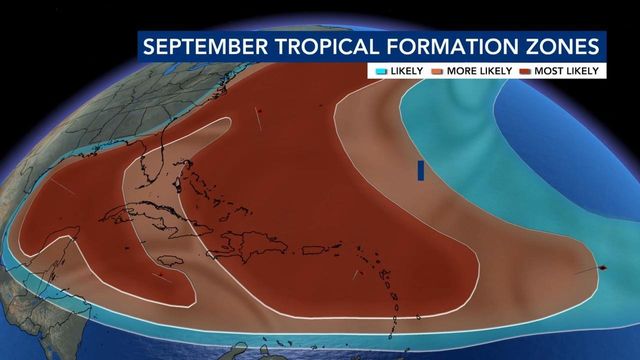Tropical Storm Sally moves across Florida, could make landfall as hurricane in La. by Tuesday
The tropics have been exploding for the past several days.
Posted — UpdatedThe tropics have been exploding for the past several days.
Tropical Depression 19, which formed Friday off the coast of Florida, strengthened into Tropical Storm Sally on Saturday around 2 p.m. after emerging into the Gulf of Mexico. The Gulf of Mexico's warm waters will likely continue to fuel the development of the storm.
As of the 11 p.m. Saturday advisory from the National Hurricane Center, Sally had maximum sustained winds of 40 mph. It was about 70 miles southwest of Port Charlotte, Fla. and was moving west at 8 mph.
Storm surge and tropical storm watches are now in effect for many areas of the Gulf Coast and a hurricane watch is in effect from the Alabama/Florida border to Grand Isle, La., and New Orleans. The storm could make landfall as a Category 1 storm sometime Tuesday, according to the NHC.
Another disturbance is just south of Louisiana and has a 10 percent chance of cyclone development.
Also late Saturday, Paulette became a Category 1 hurricane with winds at 75 mph. It was 385 miles southeast of Bermuda as of the 11 p.m. Saturday advisory. It was moving west northwest at 14 mph. Paulette could make landfall with Bermuda but is not expected to hit the United States.
Thursday marked the peak of hurricane season in the Atlantic basin
None of the active systems in the tropics are forecast to impact North Carolina at this time, but there is plenty to keep an eye on.
A tropical wave over the Gulf of Mexico has a low chance of development over the next 5 days. Two tropical waves west of African have a medium to high chance of developing over the next 5 days.
Right now, Tropical Storms Rene and Paulette are moving northwest. Paulette is forecast to strengthen to a Category 2 Hurricane and strike Bermuda. We will feel light effects of Paulette on the coast, which will increase swells and our rip current risk.
There are just four storm names left on the World Meteorological Organization list for 2020. There are no storms that begin with Q, U, X, Y and Z, because there aren't enough names with those letters.
Once the designated list of names for the season is used up, any additional storms get names from the Greek alphabet. The only time that has happened was in 2005, to date the busiest hurricane season on record, when there were 28 named storms.
La Niña means hurricanes more likely through fall
The Climate Prediction Center on Thursday upgraded the United States from a watch to advisory status for La Niña conditions.
When cooler waters develop over the east-central Pacific, it decreases the wind shear in the Atlantic, making conditions there more hospitable for tropical systems to develop into hurricanes.
Related Topics
• Credits
Copyright 2024 by Capitol Broadcasting Company. All rights reserved. This material may not be published, broadcast, rewritten or redistributed.






